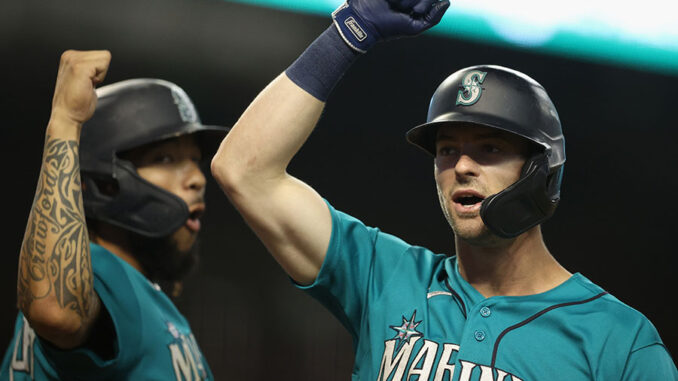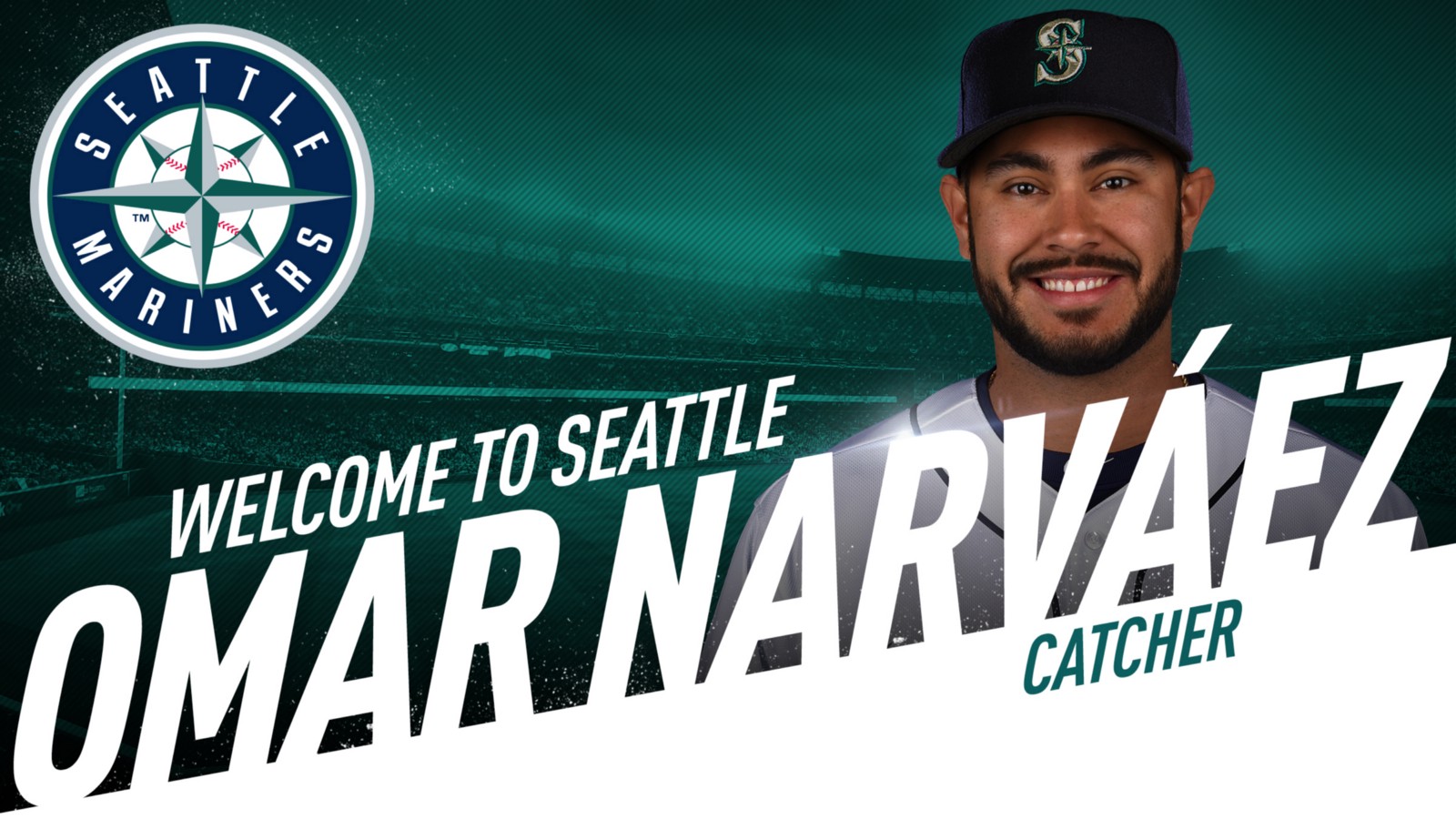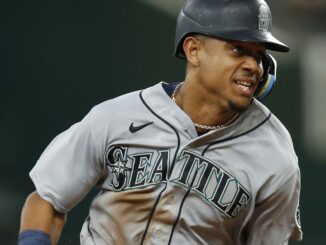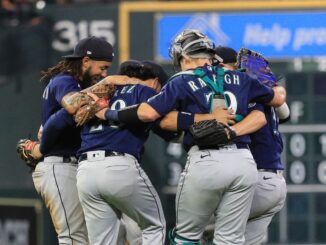
Over the past 46 years, the Seattle Mariners have had one defining characteristic that has allowed them to stand apart from the other clubs in Major League Baseball. Unlike every other franchise in the Major Leagues, the Mariners have yet to reach the World Series. As spring training gets underway, every team feels optimistic about their chances, and every player is in the best shape of their life. Indeed, the Mariners have plenty of reasons to feel optimistic about why 2024 could be the year they finally get to the Fall Classic. However, with the Mariners being the Mariners and having a long history of tripping over their own feet to fall flat on their face, there are also many reasons why 2024 will not be that year. Here are three reasons why things could go either way.
Why the Mariners will make the 2024 World Series: Their starting rotation and bullpen are among the best in baseball.
When developing pitching, practically everything that could go right for the Mariners over the past several years has gone right. The starting rotation features Luis Castillo, George Kirby, Logan Gilbert, Bryce Miller, Emerson Hancock, and Bryan Woo. All but Castillo have been drafted and developed by the Mariners in a master class of how to home-grow a starting pitching rotation, and if the team is going to make it to the World Series, they will be the primary reason why. If the rotation stays healthy and effective, it will be an incredibly difficult time for opposing hitters. What makes it even more difficult is the bullpen behind the starters. The Mariners have become renowned for their ability to turn other team’s trash into their bullpen treasure using their “Pitching Lab.” The back end of the bullpen is held down by closer Andres Munos and fireman Matt Brash, who can pitch anywhere in the game for multiple innings should the team find itself in trouble.
Why the Mariners won’t make the 2024 World Series: The new offensive additions don’t pan out.
The Mariners entered the offseason with holes at several spots in their lineup but filled several through a series of savvy free-agent deals and trades. Mitch Garver, signed away from the Texas Rangers with the biggest free agent deal given to a position player in the Jerry DiPoto era, will be the team’s designated hitter on most days while spelling Cal Raleigh behind the plate when Raleigh takes an occasional turn at DH. Garver is the kind of player the Mariners have needed at designated hitter for years; he hits for a respectable average, gets on base, hits for decent power and walks, and doesn’t chase a ton of bad pitches. At left field, Luke Raley brings terrific power, sneaky speed, and skill on the basepaths. However (stop me if you’ve heard this before about Mariners’ outfielders), he is a free swinger who strikes out over three times the number of times he walks. The team’s final addition, Jorge Polanco, will take over at second base, becoming the team’s fourth new opening-day starter in four years. Polanco brings decent pop and the ability to get on base. However, he strikes out roughly 25% of the time he comes to the plate. At the start of the offseason, DiPoto aimed to cut down on the team’s strikeouts. However, with several of the team’s offseason additions being fairly categorized as “free swingers,” it remains to be seen if the team will be able to improve at putting the ball in play this year.
Why the team will make the 2024 World Series: Addition by subtraction pays off.
The Mariners enter the season with a payroll similar to 2023, preceding any significant expenses with a budget-neutral approach. To bring in Garver, Raley, Polanco, and a few other pieces, the team sent out pitchers Robbie Ray and Marco Gonzales, outfielder Jarred Kelenic, and third baseman Eugenio Suarez. While Ray and Gonzales were understandable given the team’s current strength in starting pitching, and Kelenic and the team had both grown tired of each other’s company, trading Saurez created a whole where the team didn’t have one going into the offseason. However, in patching up another area, the Mariners will enter the season to see if a group of Josh Rojas, Luis Urias, Sam Haggerty, and Dylan Moore can recreate Suarez’s production in the aggregate. They are also taking a similar approach to one of their outfield positions, with some combination of Mitch Haniger, Dominic Canzone, Cade Marlow, Moore, Haggerty, and Taylor Trammel playing rightfield while franchise cornerstone Julio Rodriguez plays center and Raley plays left. All those players can theoretically perform at the major league level. If they can recreate most of their predecessor’s production without the cost, the Mariners’ strategy of borrowing from one spot to plug holes in another could pay off in a big way.
Why the Mariners won’t make the 2024 World Series: Addition by subtraction doesn’t pay off.
The team’s offseason got off to a rather ominous beginning. Mariners ownership, seeing the decline of regional sports network deals and having Comcast lock the Root Sports network into a more expensive tier, reneged on pledges to increase payroll and instead started cost-cutting. When lobbed a softball question about the team’s goals and plans (the easy and correct answer is “Try to be in the world series”), DiPoto instead said that the team wanted to win 54% of its games every year and that fans should be “grateful” for the team’s approach. Their opening shot of the offseason was to trade away then the popular Suarez. While the team stabilized with some savvy moves, they are still taking a big chance by asking for groups of players to overperform in both the outfield and infield while hoping that players like Julio Rodriguez and Cal Raleigh play even better than they did in 2023.
Meanwhile, solutions to several of the team’s gaps, namely third base and leftfield, are still sitting on the free agent market in the form of Cody Bellinger and Matt Chapman. The Mariners are unlikely to sign either. While the Texas Rangers and Houston Astros have shown a clear path to contention in building a core of homegrown talent and spending big to fill gaps, the Mariners have gone with homegrown talent and then duct tape and bailing wire approach to key spots in their roster. If they again fall a game or two short of the playoffs, having squandered another year of their sensational young core, it may be an approach the Mariners come to regret.




